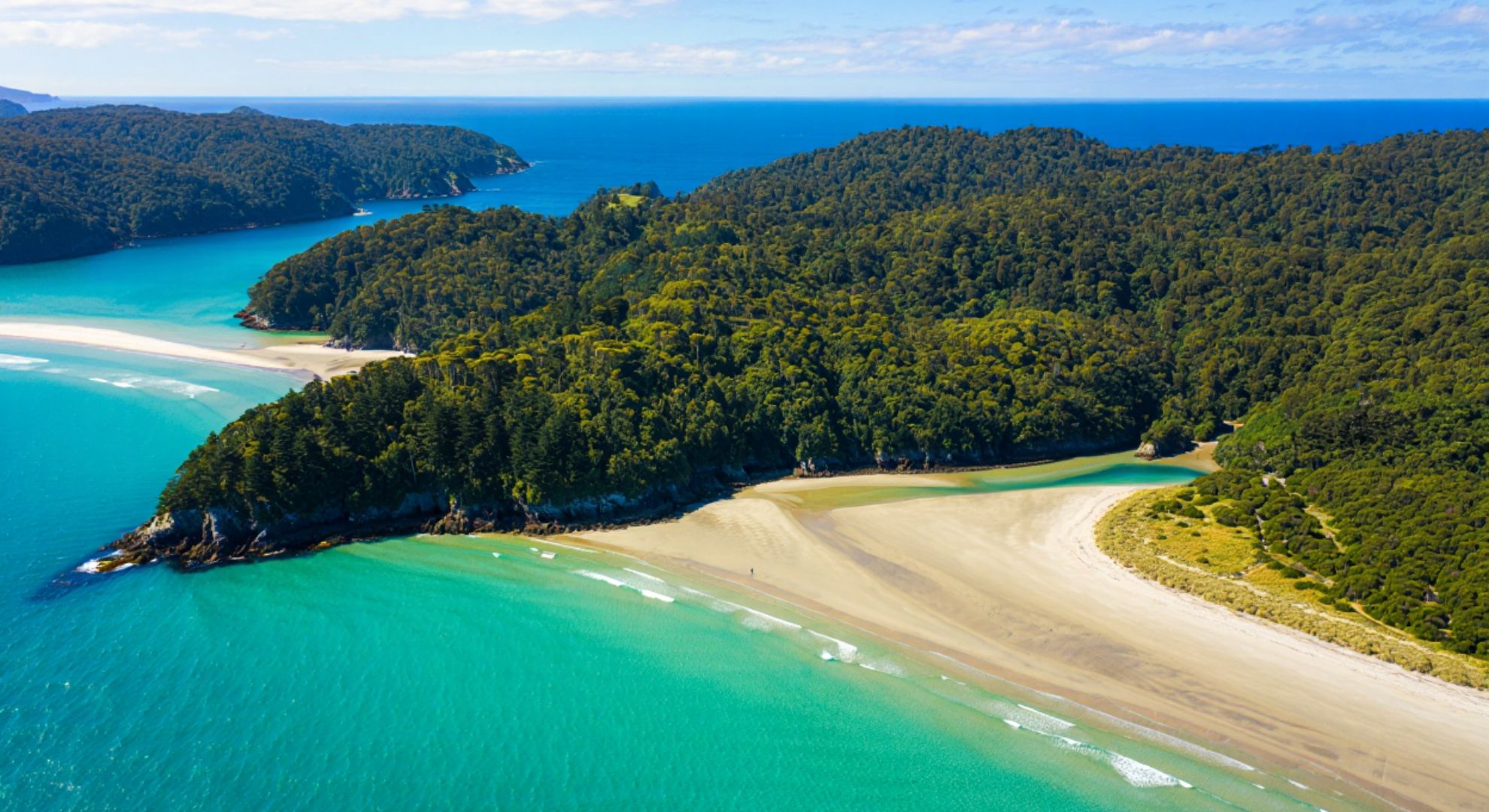Wind-swept and salt-sweet, this far-south strand feels stubbornly unchanged. Even when the rest of New Zealand surges with holidaymakers, the sand here holds its hush. The air tastes of kelp and rain, and every footprint looks temporary, erased by the next foamy lick. You arrive and notice the silence first, then the scale—miles of empty dune pushed up against a wide, steel-blue sea.
Why solitude survives
The most obvious reason is remoteness. Stewart Island sits low on the map and feels lower still in mood, a place where distance is both compass and gatekeeper. Getting to this shore demands effort, and that effort filters crowds the way a sandbar breaks a wave.
The weather adds another layer. Summer can swing from gold to grey in minutes, with winds that turn umbrellas into boomerangs. Bluebird days happen, but they don’t arrive on a schedule, and spontaneity rarely fills ferries.
There’s also a quiet community ethos at play. Locals favor restraint, conservation groups whisper “tread lightly,” and visitors catch the tone. No boardwalks, no smoothie shacks—just dunes, birds, and the rolling pulse of the South Pacific.
Getting there is the point
You can hike via peat trails that squish underfoot like dark sponge, or catch a water taxi to a landing and pick up the track where the bush opens to sky. On calm days, a small plane might hop across the strait and set down on sand as hard as timber. None of it is entirely easy, and that’s the charm.
Every approach writes a different story. Arrive on foot and the first sea hiss feels earned, like a medal you wear under your shirt. Fly in and the beach unrolls like a silver ribbon, a private runway into wind and space.
What you find when you arrive
The dunes are lofty, tufted with marram that rattles like dry rain. Kelp piles like rope, and sea lions nap with a monk’s patience, lifting a whiskered face when your boots crunch close. At dusk, the whenua gives up its secrets—a kiwi rustles through tussock with clockwork seriousness.
Nights are velvet, punched with pin-sharp stars, the kind that make you squint at the void and smile anyway. The surf keeps time, a slow metronome for thinking less and feeling more. In the morning, the horizon cuts fresh and clean, and your plans suddenly seem smaller than the light.
When to go and what to bring
Summer offers longer days, but the wind can bite like a small animal. Winter empties the island even further, trading warmth for a deeper kind of quiet. Whenever you come, pack for change, and think like a respectful guest.
- Carry a sturdy shell, warm midlayers, and dry-bagged essentials; add insect repellent, tide-aware maps, and extra snacks you’ll be glad you brought.
How it stacks up
| Place | Access Effort | Crowd Level (Midsummer) | Facilities | Wildlife Encounters | Ideal For |
|---|---|---|---|---|---|
| Mason Bay, Stewart Island | High (hike/boat/plane) | Very Low | Minimal | Kiwi, sea lions | Solitude, long walks |
| Piha, Auckland | Low (road) | High | Ample | Seabirds | Surfing, day trips |
| Cathedral Cove, Coromandel | Moderate (track/boat) | Very High | Limited | Fish, shorebirds | Photography, swimming |
| Anchorage, Abel Tasman | Moderate (track/water taxi) | High | Moderate | Seals, dolphins | Kayaking, family days |
Voices from the sand
“I came for the view and stayed for the quiet,” said a tramper tightening rain-slick laces.
“A place that asks something of you, then gives twice as much back,” murmured a guide staring at the cloud-slashed sun.
“Leave it as you found it, and it will keep trusting us,” added a ranger with boots flecked in wind-blown foam.
Reading the elements
Tides change moods, especially near river mouths where currents braid like muscle under the skin. Check forecasts with a habit, and read the beach as if it were speaking—because the rip lines and driftwood are messages, not décor.
The best camps sit modestly, tucked behind sheltering grasses, out of the wind’s straight path. Fire bans are common and wise; cook on a small stove, and let the stars do the theatre.
Care for the place
Pack out every crumb, even the ones you’d swear are innocent. Give wildlife respectful distance, and let your camera lens do the leaning. Stay on formed tracks, step around fragile dune faces, and let the island teach you patience.
In a world that sells access with a shortcut, this beach keeps its terms. If you meet it halfway—with time, intention, and a weather eye—you’ll have room to breathe, and a silence you can actually hear.
